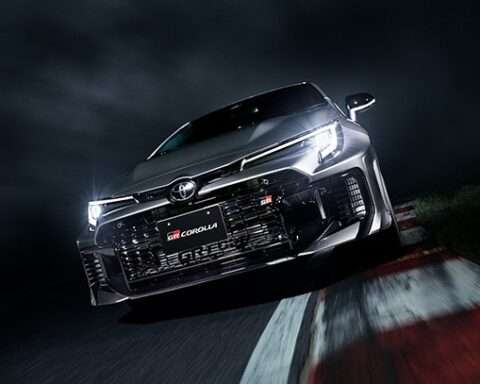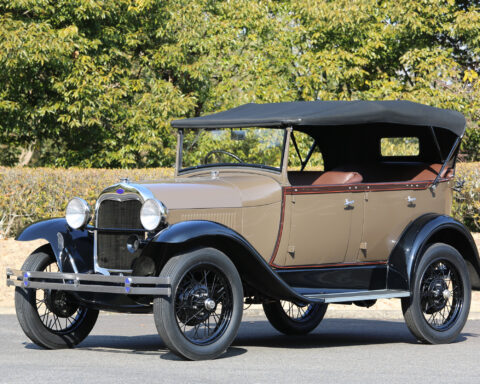Toyota City, Japan, April 8, 2021― Toyota Motor Corporation (Toyota) seeks, as a mobility company, to enrich people’s lives through mobility. As a part of this effort, Toyota has positioned safety as a top-priority issue in accordance with its ultimate goal of reducing fatalities from traffic accidents to zero and is developing safety and automated driving technologies to offer unrestricted mobility to all. Toyota will review once again what true safety is for customers and what customers believe is true convenience and will link the results of its inquiries to people’s happiness.
The approach for achieving this is the Mobility Teammate Concept―an automated driving concept unique to Toyota that seeks to enhance communication between drivers and cars, enable them to reach out to each other for mutual assist, and enable coordinated driving similar to that by close friends. Rather than cars taking over driving from people and taking their place, drivers and cars act as partners to protect one another so that drivers can enjoy the experience of driving while deferring to automated driving at times, achieving truly safe, secure and unrestricted mobility.
The new LS and the new Mirai lineups include grades equipped with Advanced Drive, a new function of Toyota/Lexus Teammate, the state-of-the-art driving assist technology developed based on this concept. The new LS was launched in Japan on April 8, 2021 and the new Mirai will be launched in Japan on April 12, 2021.*1 With the aim of ensuring that drivers remain the focus even as technologies advance, the driver and car confirm each other’s status by engaging in a dialogue, leading to safe driving and comfortable mobility.

Features of Advanced Drive
Advanced Drive has five technology characteristics: Intelligent, Reliable, Perceptive, Interactive, and Upgradeable.
The objective is to achieve automated driving that drivers can rely on through making decisions with the highest priority on safety at all times including consideration for the drivers of other vehicles while achieving natural and smooth driving equivalent to that of a person. AI technology centered on deep learning is incorporated to forecast various situations that may be encountered while driving and provide assist for driver responses.
In cases where danger is forecasted, whether in the surrounding environment or the driver’s condition, the system provides a warning, and the driver can make a decision or specify operation of the system in accordance with a proposal from the system. The objective is driving assist that fosters trust between driver and car through this two-way communication.
In addition, Advanced Drive uses software updates so functions can be added and updated after the vehicle is delivered to the customer, enhancing convenience and providing the latest technologies. In Japan, we will collect driving data, including exterior image data, transmitting it to our secure data server. By collecting and analyzing vehicle performance data under constantly changing conditions, we can use it as reference for future development of advanced safety and mapping technologies. The privacy and security of the drivers and individuals captured on camera are taken into consideration when this data is collected and processed.
Advanced Drive Function

Advanced Drive is the system that assists driving when driving on an expressway or other motor-vehicle-only roadway. By setting the destination in the navigation system, the on-board system will appropriately detect the situation, make decisions, and assist driving under the driver’s supervision according to actual traffic conditions. It can keep the vehicle in its lane, maintain the distance from other vehicles, navigate a lane split, change lanes, and overtake other vehicles until leaving the roadway for the destination.
The driver is freed from operating the accelerator, brakes, and steering, reducing fatigue during prolonged driving and enabling the driver to pay closer attention to the surroundings to achieve safe driving. The function provides natural and smooth driving in a variety of conditions including around curves, during congested traffic, and when passing by vehicles.
People-Centric Driving Assist
Detailed assist tailored to driving conditions
When driving alongside or passing another vehicle in the vicinity, the vehicle is kept in its lane while maintaining adequate space to the left and right. When passing a large, wide vehicle, for example, situations that can cause anxiety because of the short distance between the vehicles are avoided by driving further to the opposite side.
Consideration for other merging vehicles

At merge points, the distance from vehicles merging into in the main lane is maintained by decelerating at an early stage, assisting effortless merging by other vehicles.
Changing lanes and passing
When the system determines that a lane change is possible taking into consideration the status of nearby vehicles and the road conditions, the driver holds the steering wheel, confirms the destination lane, and approves the change to enable automated lane changing. The driver can also request that the system make a lane change by operating the turn lever.

Driver monitor camera

The system uses a driver monitor camera to detect the driver’s status such as which way the driver is looking, whether the eyes are opened or closed, the line of sight, and driving posture. If the system determines that the driver is looking to the other side or has his/her eyes closed, a warning is issued.
By checking safety confirmation behavior by the driver, the system assists safe lane changes. In addition, if the system detects signs of sleepiness or determines that the driver’s engagement in driving is starting to decline, a buzzer issues a warning, the seat belt vibrates, the heads-up display flashes, and a care guide app engages in dialogue, urging the driver to improve engagement in driving.
Accident Prevention
Emergency braking
In addition to the millimeter wave radar and stereo camera used in earlier systems, the new system combines information based on data from a telescopic camera, LiDAR, and high-precision maps to detect preceding vehicles in the same lane at a greater distance than the earlier Pre-collision Safety system, assisting evasive action by the driver. If the system determines that there is a possibility of a collision, it warns the driver using a color meter or color heads-up display and a buzzer, and if there is a high likelihood of a collision, strong braking force is applied and evasive action by the driver is assisted.
Driver emergency response system
If the driver’s driving posture collapses or there is no response to system warnings and the lack of operation by the driver continues, the system determines that continued driving by the driver would be difficult and gradually decelerates while warning others in the vicinity by activating the hazard lights and bringing the vehicle to a stop in the lane or on the shoulder. After the vehicle stops, the system unlocks the doors and requests assistance by automatically contacting HELPNET, contributing to the rapid rescue of the driver.
Cars that develop along with customers
Software updates
Software (control software and high-precision mapping software) is kept up-to-date through updates made wirelessly or by wired connection at a dealer. Even after purchase, new functions can be added and functions can be enhanced, providing continued advancement to a safe and secure vehicle by providing state-of-the-art driving assist technologies.
State-of-the-art hardware
Advanced Drive is equipped with state-of-the-art hardware with high performance in perception, arithmetic procession, and reliability (or redundancy) and others as a basis of software updates. The hardware provides the latest safety technologies and enable drivers to use vehicles in a safe and secure manner.









